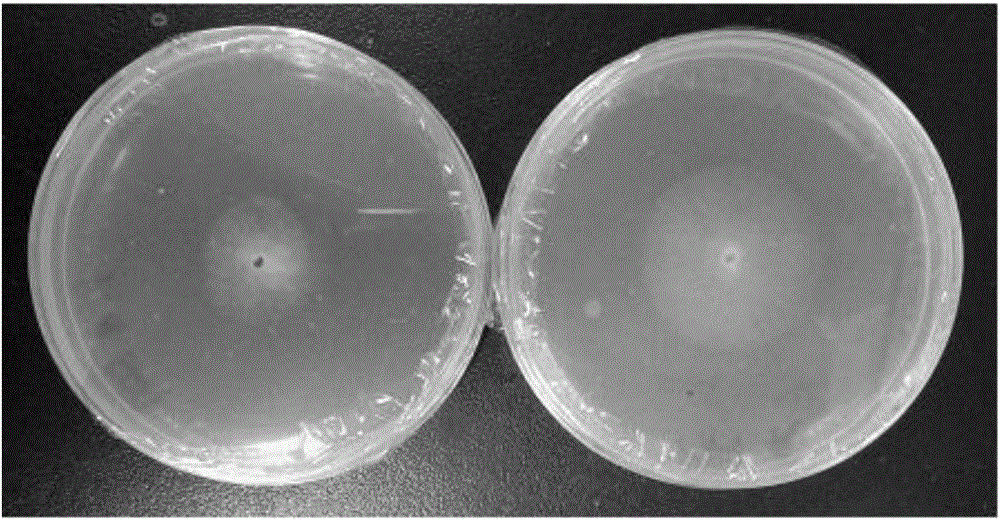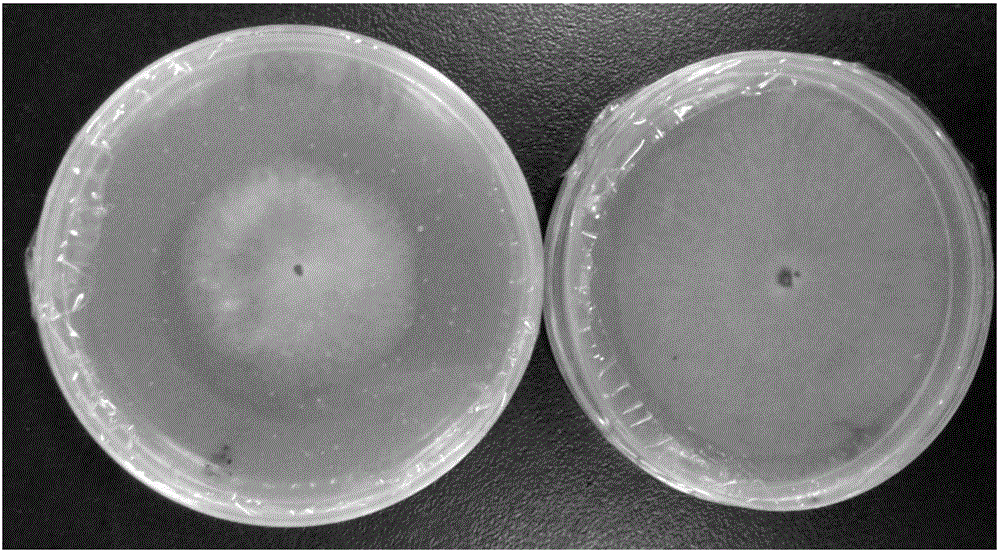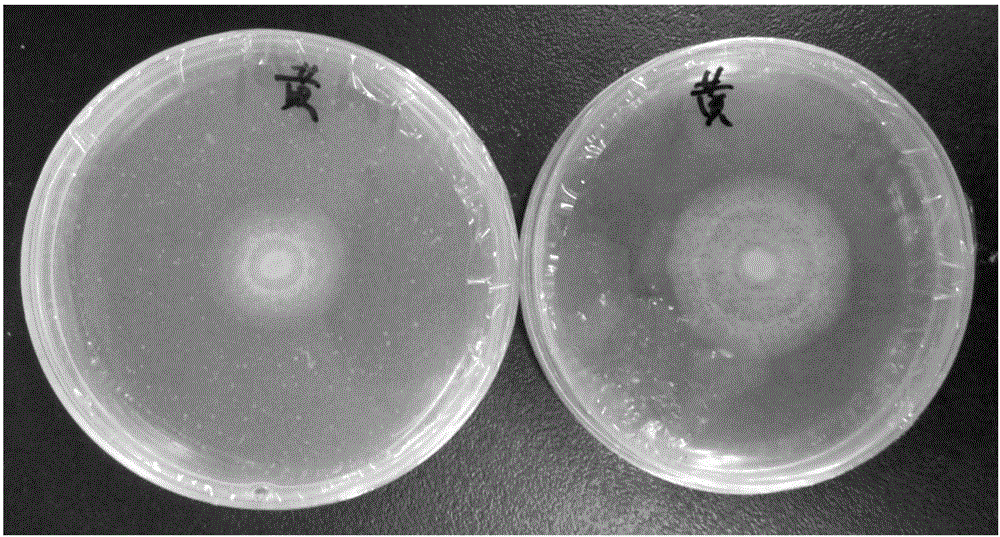Applications of acid protease in preparation of pathogenic bacterium inhibition preparation
A technology of acid protease and pathogenic bacteria, applied in the field of bioengineering, can solve problems such as the lack of clear research on properties, and achieve the effect of controlling decay
- Summary
- Abstract
- Description
- Claims
- Application Information
AI Technical Summary
Problems solved by technology
Method used
Image
Examples
Embodiment 1
[0049] Embodiment 1 acid protease P6281 anti-pathogenic fungus effect experiment
[0050] Botrytis cinerea, Rhizoctonia solani, Aspergillus flavus, Aspergillus fumigatus and Mucor circinosa involved in this embodiment are respectively Botrytis cinerea GIM3.47, Rhizoctonia solani GIM3.512, Aspergillus fumigatus GIM3.20 Mucor circinerii GIM3.79 were purchased from Guangdong Microbial Culture Collection Center; Aspergillus flavus GIM3.493 was purchased from Institute of Microbiology, Chinese Academy of Sciences.
[0051] (1) Plant pathogenic bacteria Botrytis cinerea and Rhizoctonia solani preserved at -80°C, animal and plant pathogenic bacteria Aspergillus flavus, Aspergillus fumigatus, and conditional pathogenic bacteria Mucor circinii were respectively inoculated on PDA plates, and cultivated at 25°C for 5 sky;
[0052] (2) Pick the mycelia with a diameter of 4mm with an inoculation loop and inoculate them into the PDA medium (experimental group) containing 10% of the medium vo...
Embodiment 2
[0057] Application of embodiment 2 acid protease P6281 in fruit storage
[0058] Rinse the PDA plate of Botrytis cinerea cultured for 5 days with sterile water to obtain a bacterial suspension, and mix an equal volume of 20 μL of pure enzyme solution (containing 2 μg of P6281 protease) and bacterial suspension (concentration of about 10 5 each / mL) injection and inoculation to apples, oranges and cucumbers which were surface-sterilized with 1% sodium hypochlorite solution, as the experimental group; Cultivate at room temperature to observe the development of Botrytis cinerea.
[0059] The results are attached Figure 6-8 As shown, the left side of each figure is the experimental group of P6281+ Botrytis cinerea suspension, and the right side is the control group. Figure 6 In order to observe the development of botrytis cinerea for 4 days, record the development radius of botrytis cinerea lesions, the average radius of the lesion circle in the control group was 0.76cm, and no...
Embodiment 3
[0060] Example 3 Heterologous expression and purification of Trichoderma harzianum acid protease P6281
[0061] (1) Trichoderma harzianum culture:
[0062] Inoculate Trichoderma harzianum GIM 3.442 (purchased from Guangdong Microbial Culture Collection Center) to PDA solid medium (200 mL of potato flour filtrate, 4 g of glucose, 0.75 g of magnesium sulfate, 0.75 g of potassium dihydrogen phosphate, and 4 g of agar powder) Incubate at 30°C for 2 days.
[0063] (2) Trichoderma harzianum total RNA extraction:
[0064] (1) Take about 100 mg of mycelia with tweezers after high-pressure steam sterilization, put it into a mortar pre-cooled with liquid nitrogen, add a small amount of liquid nitrogen, grind quickly with a mortar, then add a small amount of liquid nitrogen, continue grinding, repeat 3 times until all the mycelium completely turns into white powder.
[0065] (2) Add 2mL RNAiso Plus (purchased from Dalian Bao Biological Engineering Co., Ltd.) to the mortar, try to cove...
PUM
 Login to View More
Login to View More Abstract
Description
Claims
Application Information
 Login to View More
Login to View More - R&D
- Intellectual Property
- Life Sciences
- Materials
- Tech Scout
- Unparalleled Data Quality
- Higher Quality Content
- 60% Fewer Hallucinations
Browse by: Latest US Patents, China's latest patents, Technical Efficacy Thesaurus, Application Domain, Technology Topic, Popular Technical Reports.
© 2025 PatSnap. All rights reserved.Legal|Privacy policy|Modern Slavery Act Transparency Statement|Sitemap|About US| Contact US: help@patsnap.com



